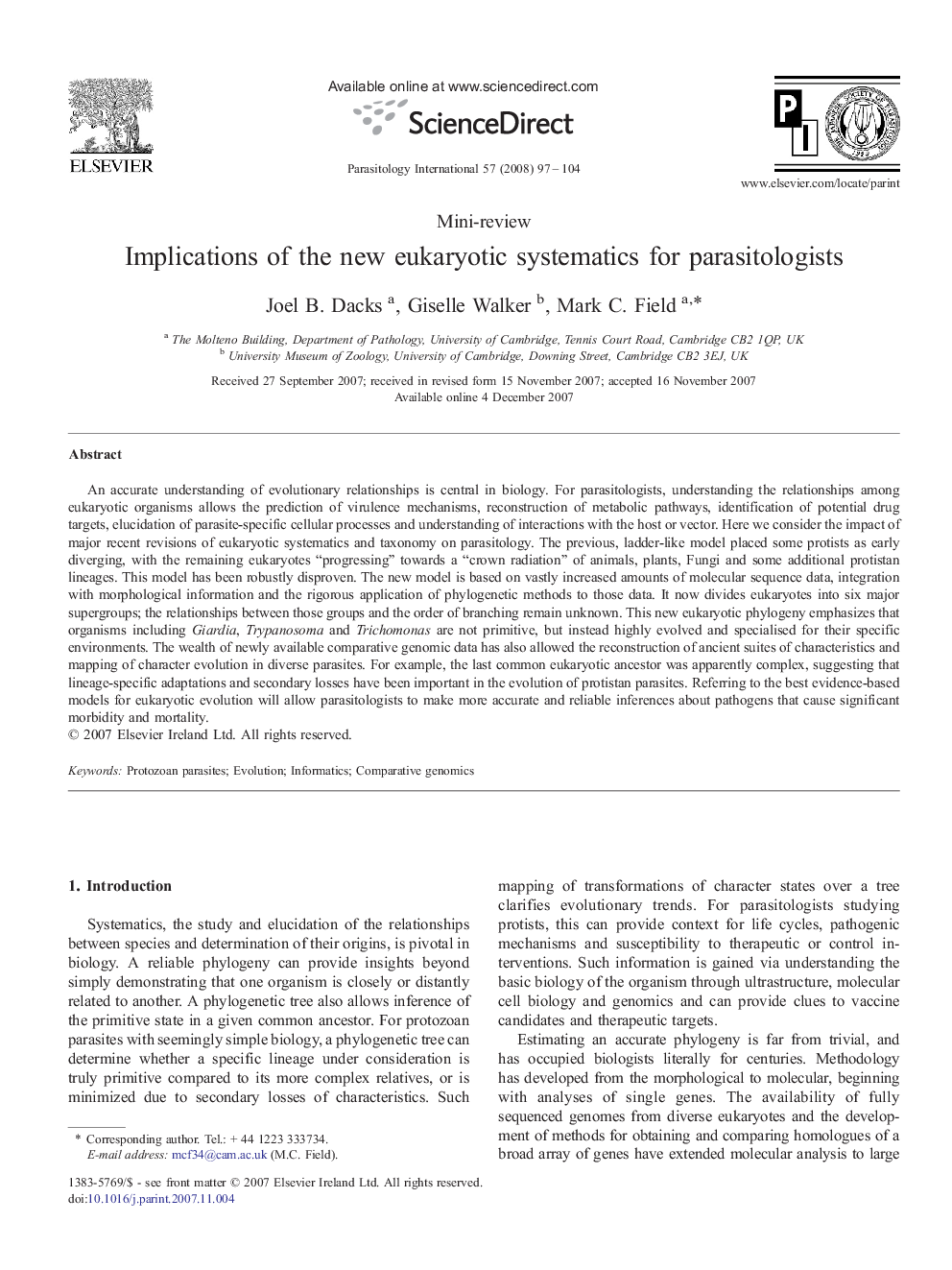| کد مقاله | کد نشریه | سال انتشار | مقاله انگلیسی | نسخه تمام متن |
|---|---|---|---|---|
| 3418396 | 1225512 | 2008 | 8 صفحه PDF | دانلود رایگان |

An accurate understanding of evolutionary relationships is central in biology. For parasitologists, understanding the relationships among eukaryotic organisms allows the prediction of virulence mechanisms, reconstruction of metabolic pathways, identification of potential drug targets, elucidation of parasite-specific cellular processes and understanding of interactions with the host or vector. Here we consider the impact of major recent revisions of eukaryotic systematics and taxonomy on parasitology. The previous, ladder-like model placed some protists as early diverging, with the remaining eukaryotes “progressing” towards a “crown radiation” of animals, plants, Fungi and some additional protistan lineages. This model has been robustly disproven. The new model is based on vastly increased amounts of molecular sequence data, integration with morphological information and the rigorous application of phylogenetic methods to those data. It now divides eukaryotes into six major supergroups; the relationships between those groups and the order of branching remain unknown. This new eukaryotic phylogeny emphasizes that organisms including Giardia, Trypanosoma and Trichomonas are not primitive, but instead highly evolved and specialised for their specific environments. The wealth of newly available comparative genomic data has also allowed the reconstruction of ancient suites of characteristics and mapping of character evolution in diverse parasites. For example, the last common eukaryotic ancestor was apparently complex, suggesting that lineage-specific adaptations and secondary losses have been important in the evolution of protistan parasites. Referring to the best evidence-based models for eukaryotic evolution will allow parasitologists to make more accurate and reliable inferences about pathogens that cause significant morbidity and mortality.
Journal: Parasitology International - Volume 57, Issue 2, June 2008, Pages 97–104